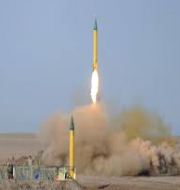Nuclear-capable surface-to-surface Agni-I ballistic missile test fired
Indigenously developed nuclear capable surface-to-surface ballistic missile Agni-I was successfully test-fired off the Odisha coast.
Test: It was conducted as part of training exercise by the Strategic Forces Command (SFC) of Indian Army. The missile was fired from mobile launcher at launchpad-4 of the Integrated Test Range (ITR) at Abdul Kalam Island (Wheeler Island) off the Odisha coast.
About Agni I Missile
- Agni-I is the first missile of the Agni series launched in 1983 by the DRDO as part of Integrated Guided Missile Development Programme (IGMDP) in India.
- Developed by: Advanced Systems Laboratory, the premier missile development laboratory of DRDO in collaboration with Defence Research Development Laboratory, Research Centre Imarat and was integrated by Hyderabad based Bharat Dynamics Limited.
- Powered by: Both solid and liquid propellants and can be fired from road and rail mobile launchers.
- Features: It weighs around 12 tonnes and is 15-metre-long.
- Payloads: Designed to carry both conventional and nuclear payload of about 1000 kg.
- Speed and Range: It can travel at a speed of 2.5 km/s and can destroy targets ranging between 700 and 1250 kms away.
- Advance Technology: It is equipped with sophisticated navigation system which helps to navigate missile to hit the target with a high degree of accuracy and precision.
- Induction: The Agni I missile already has been inducted into armed forces and claimed to be a part of the India’s minimum credible deterrence under No first to use policy.
- The first trial of Agni-I was conducted in 1989 and the last user trial was conducted in November 2015 from Dr. Abdul Kalam Wheeler Island.
Month: Current Affairs - March, 2016


